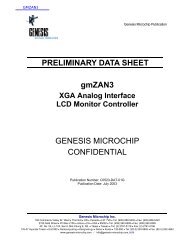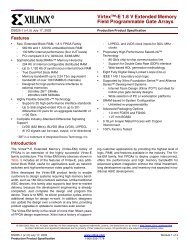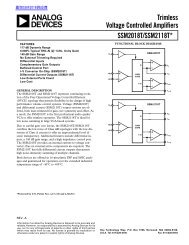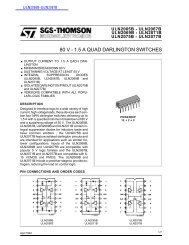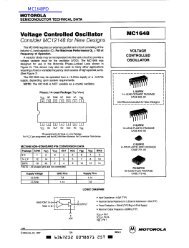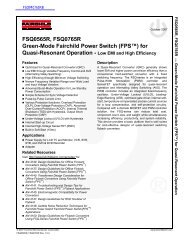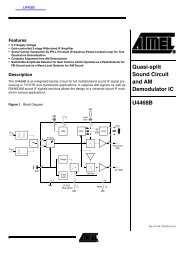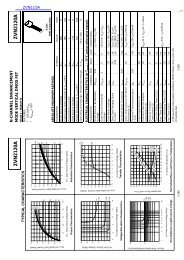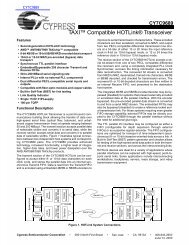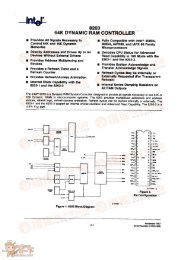You also want an ePaper? Increase the reach of your titles
YUMPU automatically turns print PDFs into web optimized ePapers that Google loves.
Numonyx <strong>Wireless</strong> <strong>Flash</strong> <strong>Memory</strong> (<strong>W30</strong>) (<strong>W30</strong>)<br />
In either case, if WAIT is deasserted, then data is ready and valid. WAIT is asserted<br />
during asynchronous page mode reads.<br />
14.4 WAIT Signal Function<br />
CE# = V IH<br />
CE# = V IL<br />
The WAIT signal indicates data valid when the flash device is operating in synchronous<br />
mode (RCR[15]=0), and when addressing a partition that is currently in read-array<br />
mode. The WAIT signal is deasserted only when data is valid on the bus.<br />
• When the flash device is operating in synchronous non-read-array mode, such as<br />
read status, read ID, or read query, WAIT is set to an asserted state, as determined<br />
by RCR[10]. See Figure 14, “WAIT Signal in Synchronous Non-Read Array<br />
Operation Waveform” on page 37.<br />
• When the flash device is operating in asynchronous page mode or asynchronous<br />
single word read mode, WAIT is set to an asserted state, as determined by<br />
RCR[10]. See Figure 10, “Page-Mode Read Operation Waveform” on page 33, and<br />
Figure 8, “Asynchronous Read Operation Waveform” on page 31.<br />
From a system perspective, the WAIT signal is in the asserted state (based on<br />
RCR[10]) when the flash device is operating in synchronous non-read-array mode<br />
(such as Read ID, Read Query, or Read Status), or if the flash device is operating in<br />
asynchronous mode (RCR[15]=1). In these cases, the system software must ignore<br />
(mask) the WAIT signal, because WAIT does not convey any useful information about<br />
the validity of what is appearing on the data bus.<br />
CONDITION WAIT<br />
14.5 Data Hold (RCR[9])<br />
Tri-State<br />
Active<br />
OE# No-Effect<br />
Synchronous Array Read Active<br />
Synchronous Non-Array Read Asserted<br />
All Asynchronous Read and all Write Asserted<br />
The Data Output Configuration (DOC) bit (RCR[9]) determines whether a data word<br />
remains valid on the data bus for one or two clock cycles. The minimum data set-up<br />
time on the processor, and the flash memory clock-to-data output delay, determine<br />
whether one or two clocks are needed.<br />
• A DOC set at 1-clock data hold corresponds to a 1-clock data cycle.<br />
• A DOC set at 2-clock data hold corresponds to a 2-clock data cycle.<br />
The setting of this configuration bit depends on the system and CPU characteristics. For<br />
clarification, see Figure 41. The following is a method for determining this configuration<br />
setting.<br />
To set the flash device at 1-clock data hold for subsequent reads, the following<br />
condition must be satisfied:<br />
t CHQV (ns) + t DATA (ns) < One CLK Period (ns)<br />
As an example, use a clock frequency of 54 MHz and a clock period of 25 ns. Assume<br />
the data output hold time is one clock. Apply this data to the formula above for the<br />
subsequent reads:<br />
Datasheet November 2007<br />
82 Order Number: 290702-13



